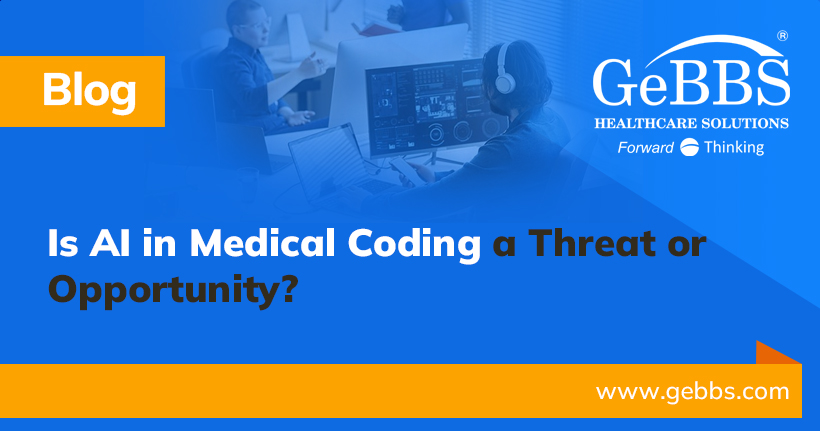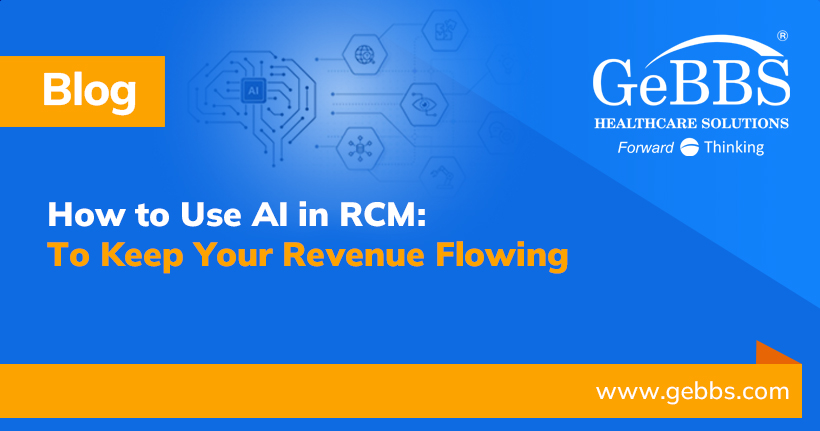Artificial intelligence (AI) is no longer a distant idea in healthcare—it’s reshaping how providers handle medical coding and billing today. According to the American Hospital Association (AHA), nearly 46 percent of hospitals and health systems now use AI in their revenue-cycle operations to improve accuracy and speed of reimbursement.[1]
Many professionals ask whether this technological leap threatens medical coders or is an opportunity to elevate their role. The truth lies closer to opportunity with the value of technology efficiency improvements and people working to embrace change. AI—especially when combined with Natural Language Processing (NLP)—transforms coding workflows by extracting meaning from unstructured documentation, reducing human error, and accelerating claims. Yet it is also changing what it means to be a coder, auditor, or compliance specialist in the revenue cycle.
The Rise of AI and NLP in Medical Coding
AI-driven coding tools use NLP to interpret clinician notes, pathology reports, and discharge summaries, identifying key terms that map to the correct ICD-10 and CPT codes. According to a 2024 Journal of Medical Internet Research review, AI-assisted clinical documentation tools can streamline data entry and improve workflow efficiency when paired with high-quality electronic health record (EHR) data.[2]
Industry observers note that integrating AI with leading EHR platforms like Epic and Cerner accelerates productivity. Automation in medical coding, such as through GeBBS Healthcare Solutions’ iCodeOne and iCode Workflow, has the potential to significantly reduce repetitive tasks while improving first-pass accuracy across large health systems.[3]
Benefits: Accuracy, Efficiency, and Compliance
Human medical coders face variable interpretation; AI systems, by contrast, apply consistent pattern recognition. Early adopters have reported measurable benefits in turnaround times and accuracy.
While imperfect, the technology can flag missing documentation and cross-check codes against payer rules. The Centers for Medicare & Medicaid Services (CMS) continues to emphasize coding precision through programs such as the National Correct Coding Initiative, which AI tools can help enforce automatically.[4]
For auditors, these same algorithms serve as a second layer of review—surfacing possible under- or over-coding patterns that would otherwise go unnoticed. In many organizations, this has translated into lower denial rates and faster revenue capture, even when AI output requires human verification.
The Human Factor: Coders Aren’t Being Replaced
Despite widespread concern, AI isn’t eliminating coders—it’s transforming their responsibilities. Today’s professionals are becoming coding analysts and compliance reviewers who interpret AI-generated results rather than starting from scratch.
As the American Health Information Management Association (AHIMA) notes, coders provide the clinical judgment, ethical oversight, and regulatory understanding that no algorithm can replicate.[5] AI may recommend a code set, but only a trained coder can confirm its medical necessity and alignment with payer policy.
In practice, AI acts as a co-pilot—handling routine tasks while freeing humans to focus on edge cases, audits, and process improvement. Coders who learn to guide and validate machine recommendations find their expertise more valuable than ever.
Challenges and Limitations
AI coding is still far from flawless. Research published in 2024 showed that large-language-model (LLM) systems tested for ICD and CPT prediction achieved less than 50 percent exact-match accuracy, underscoring the need for human oversight.[6]
Data quality remains a persistent limitation; inconsistent documentation or ambiguous physician notes can confuse algorithms. Compliance risk is another concern. OIG officials have warned that the growing use of AI in billing and documentation requires strong human oversight to avoid errors, bias, and potential fraud. The agency’s leadership has emphasized that while AI offers efficiency gains, automated tools cannot replace professional judgment in ensuring compliant coding and billing practices.[7]
Regulatory bodies such as HHS and the Office of the National Coordinator for Health IT (ONC) emphasize that AI deployment should remain transparent and HIPAA-compliant, especially when handling identifiable patient data.[8]
The safest path forward is a “human-in-the-loop” model, in which AI accelerates workflows but final validation stays with certified coders and auditors.
The Future of AI-Assisted Coding
Industry analysts expect AI adoption to grow rapidly as tools mature. The AHA predicts wider use of machine-learning models for claims preparation and denial prevention over the next three years.[1]
Beyond standard coding, AI may soon identify social determinants of health (SDOH) indicators for Z-code capture, enhance risk-adjusted reimbursement, and assist compliance teams with predictive analytics. Peer-reviewed studies show that automation can improve documentation completeness, though expert supervision remains critical to ensure accuracy and safety.[2]
As systems evolve, healthcare organizations will rely on hybrid models—blending algorithmic precision with human contextual understanding—to achieve optimal results.
How CPa Medical Billing Leverages Technology Responsibly
At CPa Medical Billing, a GeBBS Healthcare company, we believe the future of medical coding depends on balance—where technology enhances human expertise rather than replacing it. Our specialists use AI-enabled medical coding, auditing and analytics to code, identify errors faster, streamline charge capture, and improve reimbursement accuracy.
We integrate automation tools within EHR environments such as Epic to accelerate clean claims, while maintaining the highest level of human oversight for compliance. Whether supporting FQHCs, CHCs, or Tribal Health organizations, CPa ensures every code reflects both clinical reality and regulatory standards.
AI isn’t a threat to us—it’s a tool that empowers more innovative, transparent healthcare finance.
FAQs
Q1: How is AI used in medical coding today?
AI systems use NLP to read clinical documentation and recommend ICD-10/CPT codes. These tools speed up coding, highlight missing data, and improve billing accuracy.
Q2: Can AI replace human coders?
No. AI supports coding efficiency, but is improved by trained professionals’ judgment and compliance insight. Human validation is essential to prevent errors and maintain ethical standards.
Q3: What are the main risks of relying on AI for coding?
Key risks include automation bias, inaccurate predictions from incomplete data, and compliance exposure. Regular auditing and coder review mitigate these issues.
Q4: How does AI improve claim accuracy and compliance?
It cross-checks entries against payer edits and CMS policies, reducing denials and helping maintain consistent documentation.
Q5: How does CPa Medical Billing use AI in its workflow?
CPa employs AI-driven auditing tools alongside human experts to streamline the revenue cycle and ensure that every claim meets payer and regulatory requirements.
Sources
- American Hospital Association (AHA). “3 Ways AI Can Improve Revenue Cycle Management.” June 4, 2024. https://www.aha.org/aha-center-health-innovation-market-scan/2024-06-04-3-ways-ai-can-improve-revenue-cycle-management
- Luo J et al. “Improving Clinical Documentation with Artificial Intelligence: A Systematic Review.” Journal of Medical Internet Research, 2024. https://pmc.ncbi.nlm.nih.gov/articles/PMC11605373/
- GeBBS. “Autonomous Coding Enhances Precision, Efficiency, and Compliance.” https://gebbs.com/technology/icode/autonomous-coding/
- Centers for Medicare & Medicaid Services (CMS). “National Correct Coding Initiative Policy Manual.” 2024. https://www.cms.gov/Medicare/Coding/NationalCorrectCodInitEd
- American Health Information Management Association (AHIMA). “Success of Revenue Cycle AI Hinges on Health Information–Physician Partnerships.” March 28, 2024. https://journal.ahima.org/page/success-of-revenue-cycle-ai-hinges-on-health-information-physician-partnerships
- News-Medical. “AI Models Fall Short in Medical Coding Accuracy.” April 22, 2024. https://www.news-medical.net/news/20240422/AI-models-fall-short-in-medical-coding-accuracy.aspx
- Healthicity. “The Impact of AI on Healthcare Compliance.” July 2024. Citing OIG leadership comments on AI oversight. https://www.healthicity.com/blog/impact-ai-healthcare-compliance
Office of the National Coordinator for Health Information Technology (ONC). “Health Data, Technology, and Interoperability: Certification Program Updates, Algorithm Transparency, and Information Sharing (HTI-1 Final Rule).” January 2024. https://www.healthit.gov/sites/default/files/page/2024-01-18_HTI-1_Final_Rule_Overview_508.pdf






